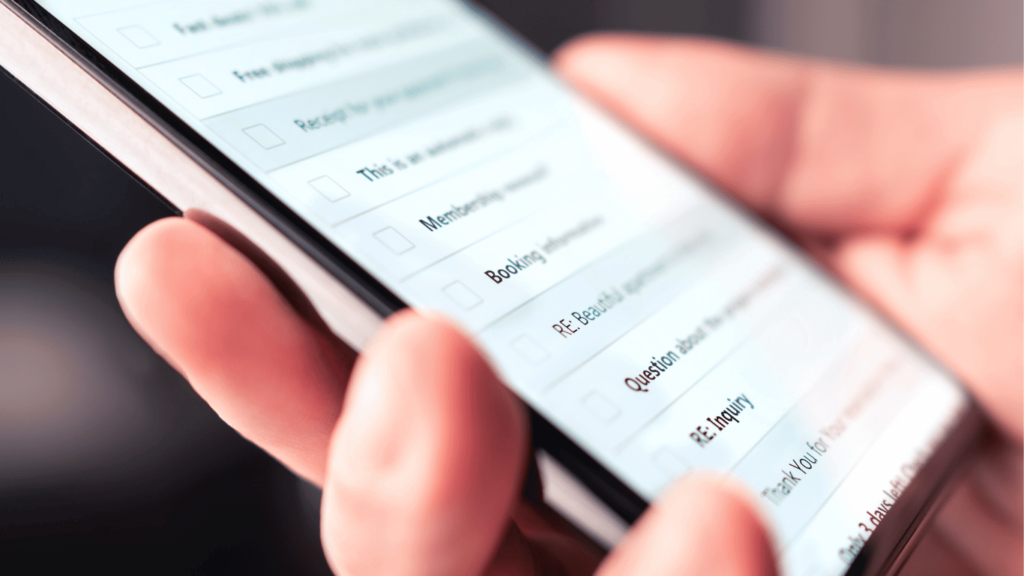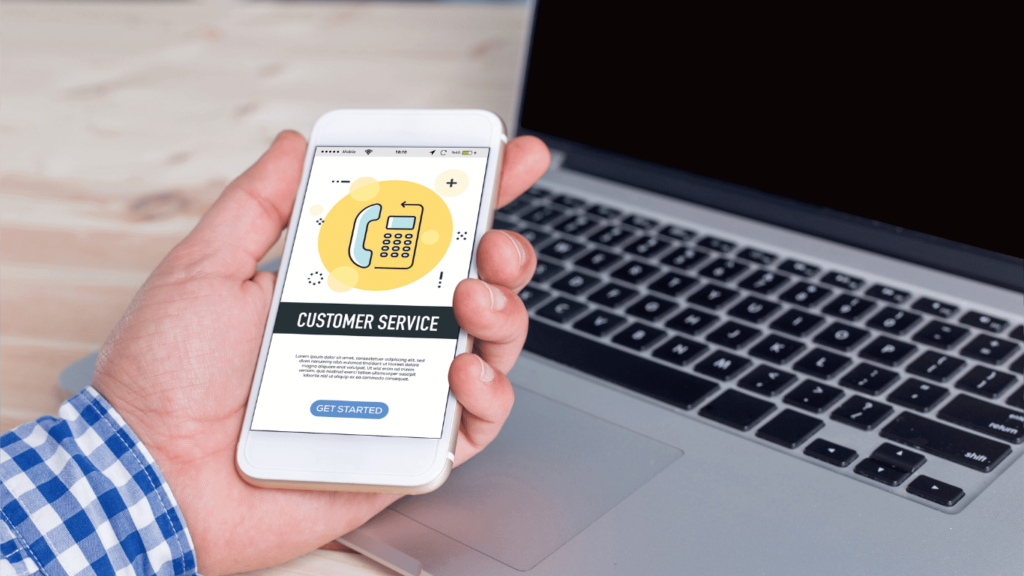How you treat your customers can make or break your company. In fact, from a survey of more than 17,000 consumers, 92% of them are willing to make a repeat purchase after a positive customer experience.
While treating each of your customers like royalty is often the goal, it isn’t exactly always what they need. There are customers who prefer highly personalized interactions. On the other hand, there are those who prefer a more generic and independent approach.
Picture these two approaches in action:
Scenario 1: A customer is in a restaurant, and the waiter knows their name, their favorite dish, and even remembers that they prefer their coffee with a dash of cream. It feels like a warm embrace of hospitality, right? That’s high-touch customer service in action—a personal and attentive approach that leaves a lasting impression.
Scenario 2: A shopper is at a self-checkout kiosk in a supermarket, scanning groceries and bagging them on their own. No human interaction is involved, but it’s quick and efficient. This is low-touch customer service—a more automated and hands-off experience.
In the digital landscape, companies are constantly grappling with a critical question: Which approach should they adopt? High-touch or low-touch customer service? The answer isn’t one-size-fits-all. It’s about finding that elusive “sweet spot” that satisfies your customers’ needs while aligning with your business goals.
The next question is—when should you use either? And should you invest in using one approach over the other?
Let’s take a walk through both approaches and break down each of their key characteristics.
What is high-touch customer service?

High-touch customer service is the art of creating highly personalized, deeply engaging, and human-centric experiences for your customers. In this approach, businesses prioritize building strong relationships with their customers that go beyond the transactional aspect of business.
When you opt for high-touch customer service, you’re making a commitment to understanding, anticipating, and exceeding your customers’ unique needs and expectations. You must understand and focus on your customers’ individual needs. In turn, deliver tailored solutions to satisfy their specific needs. These are the key aspects of high-touch customer service. In short—dedicated customer support on a personal level.
There’s still a demand for this level of personalized customer service—36% of consumers would still prefer real human interaction, despite the availability of automated and self-service options.
Key characteristics of high-touch customer service

1. Highly personalized interactions and tailored solutions
You cater to each of your customer’s individual and unique preferences. Naturally, you would refer to them by name, refer to their purchase history, and address their specific concerns.
Because of this high personalization, the solutions you offer would be more aligned with a customer’s specific situation. You’d offer personalized recommendations, product or service customization, new feature walkthroughs, or relevant alternatives.
2. Proactive engagement
High-touch customer service isn’t merely reactive; it’s proactive. It involves reaching out to customers before they even realize they have a problem or need assistance. By staying one step ahead, you show your commitment to their well-being. This proactive approach often involves anticipating needs and offering assistance without being asked.
What do customers think about proactive support? HubSpot reported that those who received proactive support were four times more likely to promote the business or service.
3. Omnichannel support
Your customers are diverse, and so are their preferred communication channels. High-touch customer service is not only available across multiple channels—it is seamless. So aside from being accessible via the channels your customers prefer, your interaction will continue seamlessly if they decide to follow up via a different channel.
If facilitated correctly, omnichannel customer support can see a 9.5% year-over-year increase in annual revenue compared to 3.4% for companies with weak omnichannel strategies.
4. Timely responses
Time is of the essence in high-touch customer service. Prompt responses are crucial to maintaining trust and showing that you value your customers’ time. Quick, efficient service is a hallmark of this approach as it shows that your company is trustworthy and reliable when it comes to seriously considering their needs.
5. Regular follow-up and feedback
High-touch customer service doesn’t end once a support ticket is closed. It involves ongoing engagement. You check in with your customers to ensure they’re satisfied and gather feedback for continuous improvement. This follow-up process strengthens the bond between you and your customers even more.
6. Emotional connection for long-term relationship building
High-touch customer service aims to build emotional connections. This can be done by making customers feel understood, appreciated, and valued.
In the long run, these emotional connections often lead to long-term relationships, fostering customer loyalty and advocacy.
7. Premium experience
Speaking of loyal customers, high-touch service is all about delivering a premium experience. Going above and beyond to provide an above-satisfactory experience for customers will definitely set your brand apart from the competition.
Benefits of using high-touch customer service

High-touch service isn’t just a customer service strategy; it’s a pathway to creating exceptional experiences that leave a lasting mark. Let’s dive into the tangible benefits that set high-touch customer service apart from the rest:
1. Stronger customer relationships
High-touch customer service is the foundation for fostering deep, meaningful relationships with your customers. Customers are more likely to stick with a brand that they have a genuine connection with, making relationship-building a key advantage.
2. Enhanced customer loyalty
Loyal customers are the lifeblood of any business. High-touch service goes a long way in building and nurturing this loyalty. When customers feel valued and appreciated, they are less likely to switch to a competitor, even in the face of enticing offers.
Their loyalty becomes a powerful asset that can drive long-term customer success too. The more high-value customers you have, the more repeat buyers and brand advocates your company will have. Customer retention will never be an issue.
3. Effective problem resolution
Complex issues often require a personal touch. High-touch customer service excels in tackling challenging problems by offering dedicated, individualized support.
This means quicker and more efficient resolutions, reducing customer frustration and increasing satisfaction. Customers remember the exceptional service they received when things didn’t go as planned.
4. Increase in revenue
Yes, customer service contribues to business growth. In fact, actively keeping your customers happy can get your upsell rates up to an average of 25% and your cross-sell rates to 20%.
5. Referrals and positive word-of-mouth
It’s very simple—people talk. More than 70% of customers will share their great experiences with others, and people trust other people. In fact, 86% of customers trust word-of-mouth reviews and recommendations from others. If your existing customers are happy, then you’ll generate new customers too.
Challenges of high-touch customer service

While high-touch customer service offers a ton of advantages, it’s not without its hurdles.
- It demands resources: You’ll need to invest more personnel, time, and effort to personalize interactions and maintain your high level of service. Training your staff can be especially demanding. They’ll need to exercise high empathy, active listening, and problem-solving skills.
- It takes a lot of work to scale while remaining consistent: The bigger your customer base gets, the more difficult it will be to keep your high-quality customer services consistent. You just can’t provide the same level of personalized attention to every customer without sacrificing quality.
- There’s a fine line between data privacy/security compliance and personalization: To best cater to your customers’ needs, you’d need to collect a good amount of their customer data. However, there’s such a thing as gathering too much data. This opens up a whole other can of worms when it comes to data privacy regulations. Also, if a business tends to “over-personalize” it can lead to a more negative experience for the customer.
- Keeping up with response times: Customers would expect prompt response times…no matter the time. However, consider times of peak customer activity like Black Friday and Cyber Monday. Would your team still be able to keep up with all the customer inquiries?
- It can take a longer time to see results: High-touch customer service is more of a long-term investment. So if you’d judge its success by its ROI, it won’t be immediately clear. Additionally, its impact on customer loyalty isn’t immediately quantifiable as you will need to give it more time to start seeing significant results.
Industries and scenarios where high-touch customer service excels

High-touch customer service shines particularly brightly in specific industries and scenarios where personalization and deep customer relationships are paramount. Here are some areas where this approach is definitely a competitive advantage.
- Luxury brands: In the world of luxury goods and services, customers expect nothing less than a premium experience. High-touch customer service aligns perfectly with the ethos of luxury brands, offering tailored recommendations, VIP treatment, and an exclusive feel.
- Complex B2B and SaaS solutions: When dealing with complex business-to-business (B2B) solutions or SaaS services, the personal touch can make all the difference. Building strong relationships with key stakeholders and providing customized solutions is often critical for success.
- Highly regulated industries: For healthcare, finance, and legal services, compliance and customer trust are crucial. High-touch service ensures that customers receive the attention and care they need while adhering to strict regulations.
- Personal consultations: Businesses offering personalized support and one on one interactions, such as financial advisors, personal trainers, and life coaches, thrive on high-touch customer service. Clients seek not only expertise but also a trusted advisor who understands their individual circumstances.
- Bespoke and customizable products: Companies that offer customizable or bespoke products, like tailor-made clothing or custom furniture, require high-touch support to ensure that each creation meets the customer’s exact specifications.
What is low-touch customer service?

Low-touch customer service, on the other hand, covers the opposite spectrum of high-touch service. This time, it focuses on efficiency, automation, and minimal human intervention. Automation and self-service is the key phrase for low-touch customer service.
As opposed to a personalized approach, low-touch services provide basic routine assistance. These would involve simple guidance through simple and common problems.
Low-touch customer service operates on the premise that many customers prefer a self-service approach, which allows them to find solutions to their issues quickly and conveniently. While it may seem less personal compared to high-touch service, it does serve its own unique purpose.
Key characteristics of low-touch customer service

1. Automation-friendly
You can easily automate low-touch service operations to cover routine tasks and inquiries. Some tools you can use would be chatbots and AI-powered assistants. Automated emails are also widely used for giving quick and standardized answers.
2. Emphasis on self-service
Sometimes, all a customer would need is a quick visit to your FAQs to solve a simple issue. Knowledge bases, online tutorials, and troubleshooting guides are easily accessible and help your customers find the solutions they need without asking for direct assistance.
3. Primarily digital format
Low-touch service relies on automation and technology, which makes this approach primarily a digital experience. They work best integrated into your websites, mobile apps, social media platforms, and email marketing.
4. High efficiency, speed, and 24/7 availability
Because of its positive affinity for automation, you can expect more customers to get faster responses and quicker resolutions without having to wait for live assistance. This also makes it possible to provide your customers with 24/7 assistance. Your FAQs, online tutorials, and knowledge bases are all there for customers to access.
Benefits of using low-touch customer service

Low-touch customer service, with its focus on efficiency and automation, offers several advantages that cater to both businesses and their customers. Here are the key benefits of adopting this approach.
1. Cost efficiency
By automating routine tasks and reducing the need for extensive human intervention, low-touch customer service can significantly lower operational costs. This efficiency allows businesses to allocate resources more strategically.
2. 24/7 availability
Customers often have questions or needs outside of standard business hours. With low-touch service, customers can access assistance 24/7, enhancing customer success models and their overall experience and satisfaction.
3. Easier to scale
As your customer base grows, your low-touch service systems can still handle the surge in inquiry traffic. Again, automation and self-service options help handle the bulk of common problems your customers would run into.
4. Empowered customers
Low-touch service empowers customers to find answers to their questions independently. Self-service options, such as knowledge bases and FAQs, enable customers to resolve issues on their terms, fostering a sense of autonomy.
Challenges of low-touch customer service

Exercise caution when relying on automation for your customer service. While it’s great for handling high-volume customer inquiries, it can also be a cause for frustration. Based on a survey, 56% of consumers find automated telephone interactions to be the most frustrating.
The frustrations don’t end there. As low-touch customer services boost efficiency, it comes at a cost of quality customer interactions.
- Little to no personalization: Automation is best for routine and generic assistance. Because of this lack of personalization, there’s also a limited emotional connection. When faced with a chatbot that would only give you surface-level responses, customers who prefer human agents might feel disconnected.
- Difficulty in solving complex issues: Similar to FAQ pages, customers can only get what they see. Low-touch support can help with the most basic and common problems. However, complex problems would already require live assistance from the human touch. A chatbot can only interpret things in ‘black and white’. However, human resources can make exceptions and consider factors outside programmed criteria.
- Frustration due to misinterpretation and customer learning curves: There’s still a risk of chatbots misinterpreting customer inquiries. One cause could be your customers struggling to find the right inputs your chatbots can understand. Additionally, self-service takes some learning and getting used to—especially for customers who are not well-versed in technology. These factors can lead to customer frustration, discouraging further interaction with your company.
Initial investment and maintenance costs: The thing with low touch support is that it’s not something you can set up and simply forget about. Every well-oiled automation system begins with a rather costly and time-consuming initial setup. Investing in chatbots, setting up AI-powered tools and self-service resources?
That’s all part of your starting infrastructure. Even after setup, your automation systems will require personal attention for regular maintenance and updates.
Industries and scenarios where low-touch customer service excels

- Consumer electronics and tech accessories: Electronics come with product specifications, making searching for specific electronics a standardized experience. FAQs and product manuals are usually enough to cover compatibility and troubleshooting concerns.
- eCommerce and retail: In the world of online shopping, customers often prefer quick, self-service options. Automated chatbots, easy returns processes, and AI-driven product recommendations enhance the online shopping experience.
- SaaS and tech support: Software as a Service (SaaS) companies and tech support services often rely on comprehensive knowledge bases, forums, and chatbots to help users troubleshoot issues and find answers quickly.
- Travel and airlines: Airlines and travel companies utilize automated check-in kiosks, digital boarding passes, and self-service baggage drop to streamline the passenger experience.
- Telecommunications: There are self-service options for bill payment, troubleshooting common network issues, and upgrading services. This approach eases the burden on customer service representatives.
- E-learning and education: Educational platforms and e-learning providers use automation for course enrollment, progress tracking, and instant access to educational resources.
- Healthcare (Routine appointments and information): Patients often schedule appointments, access test results, and seek basic medical information through online portals, reducing the strain on healthcare staff.
The solution: Finding the right balance between high and low-touch customer service

So, with all of these laid out, the question is: which approach to customer service should you go with?
The choice between high-touch and low-touch approaches isn’t a matter of right or wrong. It’s about finding the sweet spot that aligns with your business goals and customer expectations.
High-touch service excels at building strong relationships and providing personalized experiences, while low-touch service prioritizes efficiency and accessibility through automation and self-service.
The key is not to view these approaches as opposing forces but as complementary strategies that can be strategically blended. By understanding the unique advantages and challenges of both high-touch and low-touch customer service, you can tailor your approach to fit your industry, customer base, and specific scenarios.
Are you still unsure how to set up your hybrid customer service strategy? The LTVplus team can help you set up your customer service systems.
Don’t hesitate to book a free consultation with our experts and get ready to elevate your customer service game. Let’s explore how our expertise can help you craft a customer service strategy that leaves a lasting impression on your customers while optimizing efficiency and cost-effectiveness.
Remember, the ultimate goal is to create exceptional customer experiences that resonate with your audience and drive long-term loyalty. It’s a journey worth embarking on, and we’re here to guide you every step of the way.




